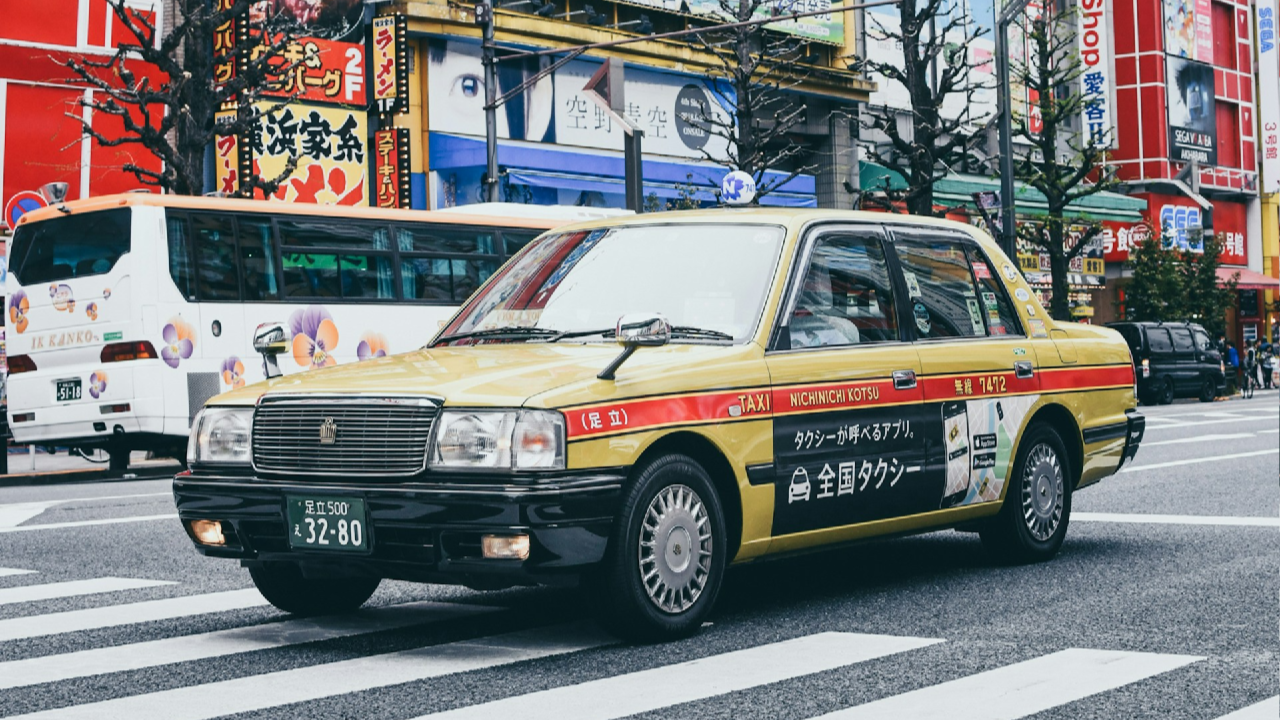Japan's taxi industry is more than just a means of transportation — it reflects the nation’s values of respect, efficiency, and quiet excellence. From their distinct designs to the vehicles used and the service offered, Japanese taxis are a subtle yet powerful symbol of cultural pride and precision.
A Tradition Rooted in Respect

The history of taxis in Japan dates back over a century, evolving alongside the country’s rapid modernization. Initially introduced in major cities like Tokyo and Osaka, taxis became essential for urban mobility during the early 20th century. Over time, they grew into more than just transport — they became an extension of omotenashi , the Japanese concept of hospitality rooted in silent attentiveness and care.
Design That Speaks Without Noise

Unlike many countries where taxi design is regulated, Japan allows each company to choose its own visual identity. This has led to a diverse landscape of colors and styles across regions. In Osaka, black taxis dominate due to their dual use as luxury transport. Meanwhile, private owner-operated cabs often wear white bodies with blue stripes, offering a clean and recognizable presence on city streets. These choices reflect both function and branding, blending local identity with practicality.
Vehicles Built for Longevity and Comfort

For decades, the Toyota Crown and Nissan Cedric were the most common models used in Japan’s taxi fleets. Their durability, spacious interiors, and smooth ride made them ideal for long shifts and demanding urban environments.
Earlier generations saw widespread use of the Nissan Bluebird , Laurel , and Toyota Mark II , but by the late 1990s, the Toyota Comfort and its upgraded variant, the Crown Comfort , became dominant. These cars were specifically designed for high mileage, ease of maintenance, and passenger comfort.
Adapting to a Greener Future

In recent years, environmental concerns have reshaped Japan’s taxi fleet. Hybrid models like the Toyota Prius and electric options such as the Nissan Leaf are now increasingly common, especially in major metropolitan areas.
This shift aligns with Japan’s broader sustainability goals and reflects a growing awareness among passengers and drivers alike about reducing emissions while maintaining performance and reliability.
Welcoming All Travelers

With the arrival of the Toyota JPN Taxi , developed ahead of the 2020 Summer Olympics, Japan took another step toward inclusivity and innovation. Designed as a hybrid vehicle, the JPN Taxi features a low-floor design that accommodates wheelchair users and improves accessibility for elderly and disabled passengers. More than just a car, this model was created to embody Japanese hospitality — offering seamless entry, ample space, and a welcoming environment for every rider.
Service Beyond the Meter

What truly sets Japan’s taxi industry apart isn’t just the vehicles or the routes — it’s the service. Drivers are known for their professionalism, attention to detail, and courteous behavior. Doors open and close automatically, uniforms are crisp, and conversations are kept respectful and minimal. Even in the busiest cities, riding in a Japanese taxi feels less like a commute and more like a curated experience — one that leaves a lasting impression on visitors and locals alike.
Inspiration on a Smaller Scale

Beyond real-world roads, Japan’s taxi culture has also left its mark on the world of scale modeling. Enthusiasts around the globe recreate these iconic vehicles in miniature form, capturing everything from color schemes to interior layouts. Whether displayed in dioramas or built for RC operation, these models celebrate the same values seen on the streets — attention to detail, craftsmanship, and a deep appreciation for everyday objects done exceptionally well.
Japanese taxis may move quietly through city streets, but their influence echoes loudly in the modeling community, inspiring builds that honor not just a vehicle, but a way of life.















